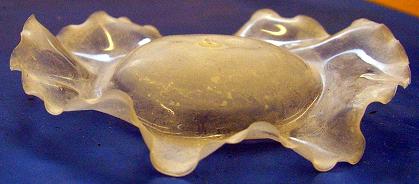A team of researchers from the Hebrew University succeeded in "programming" materials that will become diverse and rich, similar to what happens in nature

In the photo: the shape of a 'sombrero' created by scientists at the Hebrew University as a result of heating a programmed sheet of polymer gel.
Is it possible to "program" inert and flat materials to become three-dimensional and diverse shapes such as domes, funnels or sombrero hats? According to Dr. Eran Sharon and his research colleagues, Yael Klein and Efi Efrati, from the Rakah Institute of Physics at the Hebrew University - the answer is definitely yes.
For the first time in the world, Dr. Sharon and his colleagues succeeded in causing thin sheets of polymers to bend independently and become defined shapes such as hats and domes, in accordance with the early programming that was done in them. The results of the revolutionary research were published in the prestigious journal Science.
The process is similar to the way buds develop and turn into a flower with a complex shape. "Uneven growth in the plane leads to the formation of three-dimensional structures, even very complex ones", Dr. Sharon explains the principle underlying the research.
The thin sheets of material change their shape because the concentration of the gel (consisting of a network of polymers) from which they are made is not uniform on their surface. As a result, as soon as the ambient temperature is raised above 33 degrees Celsius, the gel sheet shrinks at different rates and in different places, and at the end of the process becomes a defined shape. After a series of laboratory experiments, the researchers realized that these shapes are created as a result of the contractions of the polymers and built an automatic method that would dispense the amount of polymer gel required to build the desired shapes.
The method for designing surfaces developed by Dr. Sharon and his research colleagues is based on principles from the field of differential geometry, a field used by Albert Einstein when he developed the theory of relativity. "It is this principle that gives the strips of chips the curves in their shape," explains Dr. Sharon.
According to Dr. Sharon, the results of the research have important implications, especially in the field of biomedicine and biomechanics. "Through our development, it is possible to build soft accessories, such as casings and valves, which can change their shape dynamically inside the human body. Beyond that, the development enables the simple and cheap creation of highly complex and dynamic structures that are difficult to produce industrially. Understanding the new design principle gives us the tools to understand one of the fascinating scientific questions: What mechanisms allow bodies that grow in nature, like flowers and embryos in their mother's womb, to get their desired shape?"
